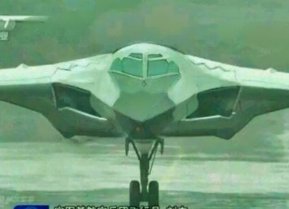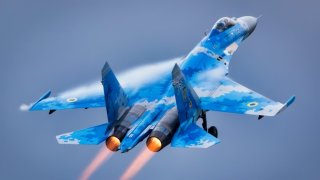Su-27 Fighter Down: The Russian Air Force's Ukraine Nightmare Won't End
On March 12, a Russian Su-27 fighter jet, crucial in the aerospace conflict dynamics, reportedly crashed near the Ukraine border in Valuyki, Belgorod. Circulating video footage shows smoke plumes, though details are unverified.
Summary: On March 12, a Russian Su-27 fighter jet, crucial in the aerospace conflict dynamics, reportedly crashed near the Ukraine border in Valuyki, Belgorod. Circulating video footage shows smoke plumes, though details are unverified. Ukrainian figure Igor Suskho attributed the incident to the pro-Ukraine Russian Freedom Legion's activities, a claim not confirmed by Russia's Defense Ministry. The Su-27, a Soviet-era air superiority fighter designed to counter U.S. aircraft, remains integral to Russian air defense, despite controversies like China's unlicensed production. Its significance extends into the ongoing Russia-Ukraine war, with the aircraft engaging on both fronts.
Russian Su-27 Fighter Jet Reportedly Downed Near Ukraine Border: Unverified Claims Surface
The Russian Aerospace Forces reportedly lost another fighter jet on March 12 as a Sukhoi Su-27 crashed near the border with Ukraine. The supersonic fighter came down near the town of Valuyki, in the Belgorod region. Video footage quickly circulated online that showed plumes of smoke rising into the sky. The details have not been independently verified.
"Russian Su-27 fighter aircraft reportedly shot down over Belgorod, on the Russian side of the border with Ukraine, where the pro-Ukraine Russian Freedom Legion is currently active," wrote Ukrainian propagandist Igor Suskho on X. Suksho shared the video footage.
The Russian Ministry of Defense did not confirm the crash.
The Su-27 in the Crosshairs
The Sukhoi Su-27 (NATO reporting name Flanker) was developed in the Soviet Union in the early 1970s to be the Kremlin's answer to the F-15 Eagle and the F-14 Tomcat.
The Flanker first entered service in the mid-1980s as an air superiority fighter. Its primary role was to be a long-range interceptor against U.S. Air Force strategic bombers such as the B-1B Lancer, B-52G, and H Stratofortress, while also protecting the Soviet Union's coastlines from aircraft carriers. It was further tasked as a long-range fighter escort for Soviet heavy bombers including the Tupolev Tu-95, Tupolev Tu-22M, and Tupolev Tu-160.
After the Soviet Union dissolved, the Flanker remained the backbone of the Russian Air Force throughout the 1990s and early 2000s. Many of the aircraft underwent a mid-life upgrade and were redesignated as the Su-27SM. The fighters were equipped with new avionics, and they were complemented by a small batch of newly built aircraft that also featured improved avionics and mission equipment. Those aircraft were designated Su-27SM3.
In the 1990s, Moscow began to produce the Flanker for foreign sales. Among the export models was the baseline Su-27SK, developed for China, which also received the Su-27UBK.
After the People’s Liberation Army received around 80 of the Russian-built aircraft, Beijing began to produce a licensed version. China angered Russia when it built 95 single-seat models designated as the J-11, a reverse-engineered version of the Su-27.
Use by Both Sides in the Russian-Ukraine War
The Su-27 has seen considerable service in the conflict in Ukraine.
In fact, the first Soviet unit to receive the Flanker was the 831st Fighter Regiment (now Brigade), which was based at Myrhorod, in the former Soviet Republic of Ukraine. The unit was considered to be among the best in the Soviet Union.
Around two dozen were still reported to be in Ukrainian service when Russia launched its unprovoked invasion in February 2022.
Author Experience and Expertise: Peter Suciu
Peter Suciu is a Michigan-based writer. He has contributed to more than four dozen magazines, newspapers, and websites with over 3,200 published pieces over a twenty-year career in journalism. He regularly writes about military hardware, firearms history, cybersecurity, politics, and international affairs. Peter is also a Contributing Writer for Forbes and Clearance Jobs. You can follow him on Twitter: @PeterSuciu. You can email the author: [email protected].
Image Credit: Shutterstock.


